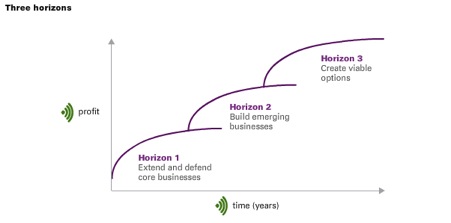No matter what type of products or services your organization offers, to be a successful it must innovate and monetize innovations on an ongoing basis. The truth is although innovation is a crucial component of business strategy the process of innovation may seem difficult to manage.
Many companies have no systematic innovation program to allow the employees to work on innovative ideas or concepts on a regular basis. Of course, in matured organizations such as GE, P&G, & 3M etc., systematic innovation has become part of their DNA as innovation has been instilled into the system over the decades. Nevertheless, every organization tries to innovate one way or other i.e. some have systematic innovation programs and some just happen to embark upon innovative ventures as and when required.
When one starts analyzing systematic innovation programs one finds that the organizations, which follow such programs are generally able to allocate enough resources & finances to fund such programs. Such organizations are not cash strapped and since they have reaped the benefits of such programs they know that the results far outweigh the investments. In other words the biggest obstacle of not knowing the potential in running such program is already overcome in such organizations.
What you may also find is that such organizations, which practice systematic innovation, follow some model or other and try to cover their three horizons [1] short term, moderate term, and long term of their businesses.

Figure: Three Horizons Framework
On the other hand most organizations, which do not have such programs, either are okay with not having such program or get into what can be called as ‘analysis paralyses’. Since the potential of such program is not known most organizations are always challenging the concept on whether it is right thing to do. Some organizations even start the innovation programs on trial basis but tend to abandon the program when it does not succeed within first few attempts.
Such organizations then rely on opportunistic innovation or innovation by accident, which may or may not lead to successful innovations. But then as long it serves organizations purpose and as the cost of running (or should I say not running) is not high, such organizations keep innovating one way or other. Some such organizations even enjoy success when they are able to monetize the innovation. In cases where such innovations cannot be monetized the organizations keep trying till they succeed or ultimately wind up innovative attempts (and subsequently entire organization) because of subsequent failures.
So the question is NOT which one is better, systematic or haphazard innovation? The question is do you know what innovation model your organization follows? Do you think you need to have systematic innovation program rather than haphazard or vice versa? If you do then do you know how to move from one paradigm to another?
To build a systematic innovation program an organization (i.e. the creators of the program) must understand that innovation process has discrete stages such as idea generation and mobilization, screening and advocacy, experimentation, commercialization, and diffusion and implementation. Organizations who want to build a successful systematic innovation program will have to use an outlined innovation process to create a common framework for discussion and initiatives around the innovation process, and then establish metrics and goals for each stage of the innovation process. If you want your organization to move into ‘systematic innovation’ program because doing vice versa is neither required nor recommended I highly recommend you read the article ‘Crafting organizational innovation processes’ [2].
[1] Mehrdad Baghai, Stephen Coley, and David White, The Alchemy of Growth, New York: Perseus Publishing, 1999
[2] Crafting organizational innovation processes
http://www.thefreelibrary.com/Crafting+organizational+innovation+processes.-a0198933617